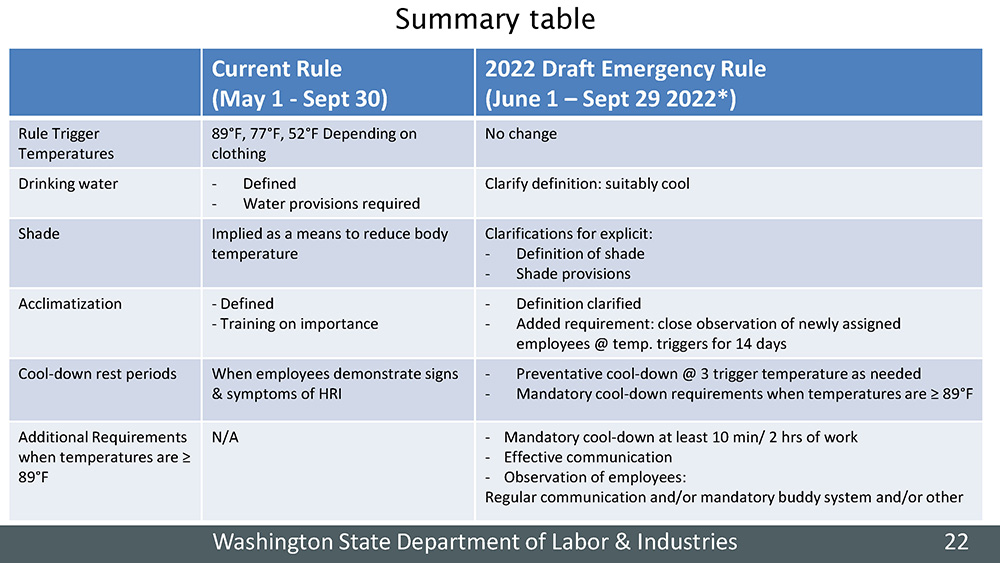Ambient heat rules likely to trigger at 89º soon
Excessive exposure to heat can cause heat-related illnesses, ranging from heat rash and heat cramps to heat exhaustion and heat stroke. Heat stroke can result in death and requires immediate medical attention.
To control heat illness incidents, Washington’s Department of Labor and Industries has initiated an emergency ruling affecting employees who work outdoors in excessive heat for over an hour in temperatures of 89 degrees or higher. Although L&I initiated the permanent rulemaking process, it has not been completed yet. L&I plans to file around June 1 and should be providing an effective date for the rule by the middle of June.
To avoid outdoor heat related illness, the following temperatures should be referenced relating to the type of work being performed and the type of clothing and PPE worn:
- 52º and above when wearing non-breathing clothes, including vapor barrier clothing or PPE, such as chemical resistant suits.
- 77º and above when wearing double-layer woven clothes, including coveralls, jackets, and sweatshirts.
- 89º and above for all other clothing.
When these temperatures are reached, depending on clothing and PPE, when employees work outside for more than 15 minutes per hour, they must be supplied water and encouraged to drink it often to stay hydrated.
Supervisors and employees who regularly work in these temperatures will need to be trained on these rules and learn to identify signs and symptoms of heat-related illnesses. This temperature-related training should include:
- The environmental factors that contribute to the risk of heat-related illness
- Employees should be aware of personal factors that may increase their susceptibility to heat-related illness, including, but not limited to an individual’s age, degree of acclimatization, medical conditions, drinking water consumption, alcohol use, caffeine use, nicotine use, and use of medications that affect the body’s responses to heat
- The importance of removing heat-retaining personal protective equipment such as nonbreathable chemical resistant clothing during all breaks
- The importance of frequent consumption of small quantities of drinking water or other acceptable beverages
- The importance of acclimatization
- The different types of heat-related illness and the common signs and symptoms of heat-related illness
- The importance of immediately reporting to the person in charge all signs or symptoms of heat-related illness in themselves and their co-workers
- The procedures employees must follow, including appropriate emergency response procedures

Related WISHA training programs include:
Information on ambient heat exposure rulemaking is in progress. Details are available on this temporary webpage.
If you would like to provide input on these requirements or have questions for L&I, you can contact them here or Rose Gundersen, VP of Operations and Retail Services, at 360-200-6452 or [email protected]





